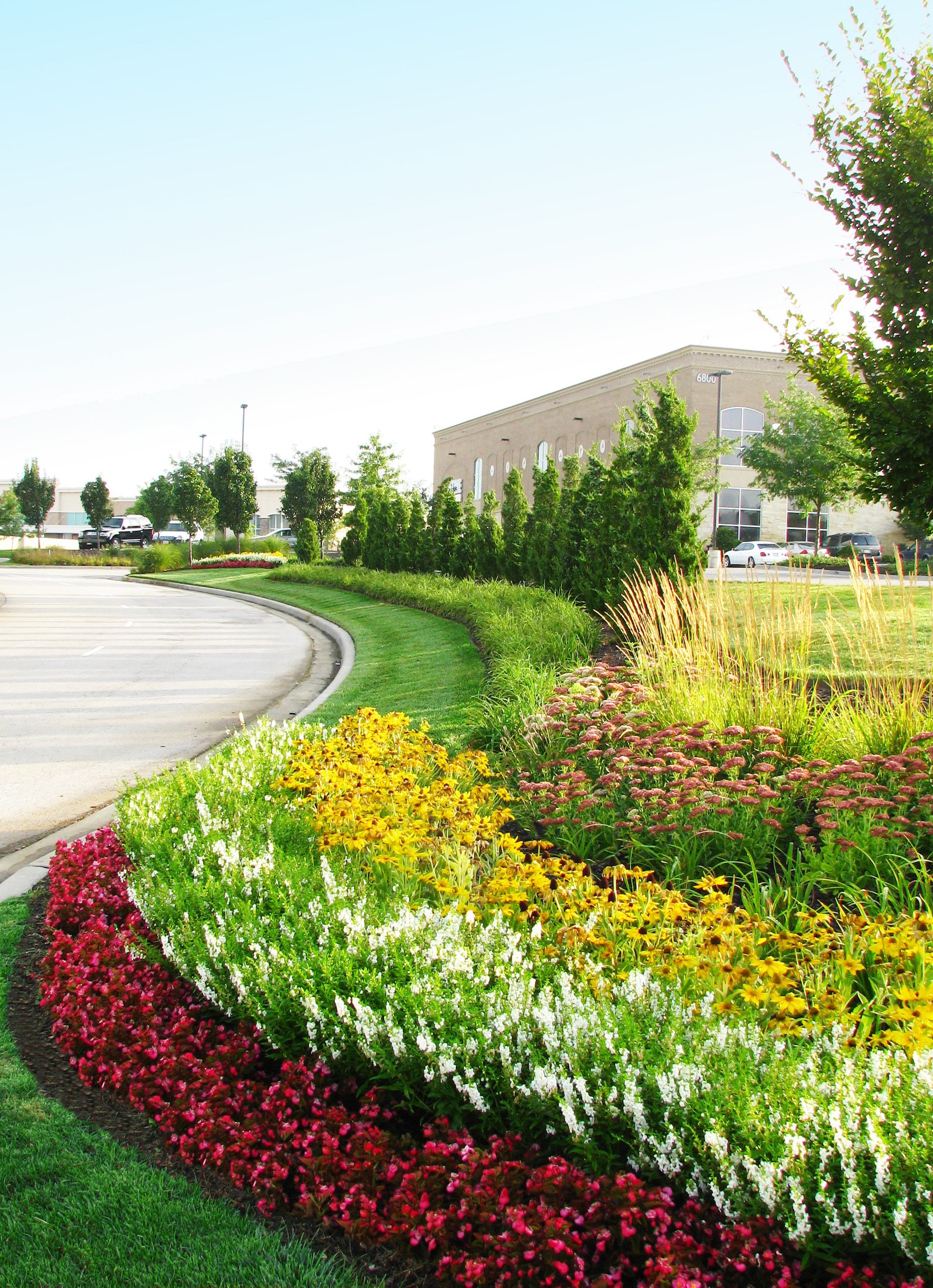Ideal Landscaping Companies Jacksonville: Comprehensive Landscaping Solutions
Ideal Landscaping Companies Jacksonville: Comprehensive Landscaping Solutions
Blog Article
Elevate Your Building's Visual With Sustainable Landscaping Layouts and Eco-Friendly Practices

Advantages of Lasting Landscape Design
Applying lasting landscape design methods not only saves natural resources but also advertises biodiversity and boosts total ecological health and wellness. By selecting green landscape design methods, building proprietors can gain a wide variety of benefits that extend past simply aesthetic allure. One substantial advantage is the decrease of water intake with using drought-resistant plants, rainfall yards, and effective irrigation systems. This not just reduces utility costs yet additionally adds to water preservation initiatives in the community.
In addition, sustainable landscape design can enhance dirt health and wellness by minimizing using chemical fertilizers and chemicals, thus developing a healthier setting for plant growth and advantageous dirt microorganisms. This, in turn, improves the total resilience of the landscape to hold up against environmental stress factors and climate modification impacts - landscaping companies Jacksonville. In addition, sustainable landscaping methods can attract diverse wild animals, consisting of pollinators like butterflies and bees, cultivating a much more balanced and lively ecosystem within the residential property
Incorporating Indigenous Plants
To build on the advantages of lasting landscape design, a critical emphasis on including native plants can further enhance ecological resilience and promote biodiversity within the landscape. Indigenous plants are varieties that normally take place in a certain location and have actually progressed to prosper in the neighborhood environment, dirt problems, and environment. By including native plants in landscaping layouts, residential or commercial property owners can reduce water use, decrease the demand for chemical pesticides and plant foods, and support the local wild animals populace.
Integrating indigenous plants also aids in preserving the special personality and identification of a region's vegetation. These plants frequently call for much less maintenance as soon as developed, making them a economical and sustainable landscape design option in the long run. Additionally, indigenous plants can draw in native pollinators like and butterflies, adding to the total health and wellness of the environment.
When choosing indigenous plants for landscaping projects, it is vital to pick types that are well-suited to the certain environmental problems of the site. Consulting with neighborhood nurseries or arboretums can provide important support on selecting the right native plants for a specific area. By incorporating indigenous plants into landscape design designs, homeowner can produce stunning, lasting outdoor areas that profit both the atmosphere and the area.

Water Conservation Methods
Effective irrigation approaches play a vital role in lasting read the full info here landscaping methods, guaranteeing optimum water conservation initiatives in exterior spaces. Trickle irrigation provides water straight to the roots of plants, lessening evaporation and drainage.
In addition to innovative irrigation techniques, xeriscaping is an additional water-saving landscaping method that concentrates on using drought-resistant plants, compost, and reliable irrigation to produce a low-water landscape layout - bush removal Jacksonville. By choosing native plants that are fit to the local environment and dirt problems, residential or commercial property proprietors can lower the need for excessive watering, eventually preserving water and promoting a sustainable outside setting
Eco-Friendly Hardscaping Ideas
Enhancing outdoor areas with environment-friendly hardscaping attributes can contribute considerably to sustainable landscape design methods. When taking into consideration hardscaping components, choose products like redeemed timber, recycled concrete, or all-natural rock to minimize environmental impact. These products not only include an one-of-a-kind visual interest your outside area however likewise minimize the requirement for new resources removal.
Applying absorptive leading choices such More Info as gravel or permeable concrete can aid lower water runoff and promote groundwater recharge. These choices permit rain to leak into the ground, preventing disintegration and minimizing the burden on stormwater systems.
Integrating indigenous plants into hardscaping designs can better improve eco-friendliness by sustaining local wild animals and decreasing the need for too much watering or chemical treatments. By including vertical yards or green wall surfaces, you can introduce a lot more plants into metropolitan settings, boosting air high quality and biodiversity.
Including energy-efficient illumination, such as solar-powered LEDs, into hardscaping designs can minimize electrical energy consumption and lower your residential property's carbon footprint. Focusing on environment-friendly hardscaping ideas not just enhances the appeal of your outdoor area yet also shows a commitment to environmental stewardship.
Upkeep Tips for Sustainable Landscapes

Regularly trim plants to promote healthy development and prevent overgrowth that can cause pest infestations or illness. Usage natural fertilizers to nurture the dirt and plants without damaging chemicals that can seep into the atmosphere. For hardscaping components, such as permeable pavers or rock pathways, consistently tidy them to avoid debris buildup and maintain their performance. By remaining proactive with maintenance tasks, you can maintain the elegance and sustainability of your landscape for years to find.
Final Thought
In final thought, lasting landscape design techniques supply numerous benefits for residential or commercial property owners, from improving the aesthetic appeal of the surroundings to promoting environmental conservation. By incorporating native plants, executing water conservation techniques, and utilizing green hardscaping concepts, property proprietors can create stunning landscapes that are likewise ecologically responsible. With proper maintenance, lasting landscapes can add and grow to a healthier community for both humans and wildlife.
Furthermore, lasting landscape design can enhance soil health by minimizing the usage of chemical plant foods and pesticides, thereby creating a much healthier setting for plant growth and advantageous soil microorganisms.To develop upon the benefits of lasting landscape design, a tactical emphasis on integrating native plants can further boost eco-friendly durability and promote biodiversity within the landscape. By consisting of native plants in landscaping styles, residential property owners can reduce water use, lessen the requirement for chemical pesticides and plant foods, and sustain the local wildlife populace.
These plants frequently call for less maintenance once established, making them a sustainable and cost-effective landscaping option in the long run. By integrating native plants into landscape design designs, building proprietors can develop stunning, lasting outdoor areas that profit both the atmosphere and the area.
Report this page